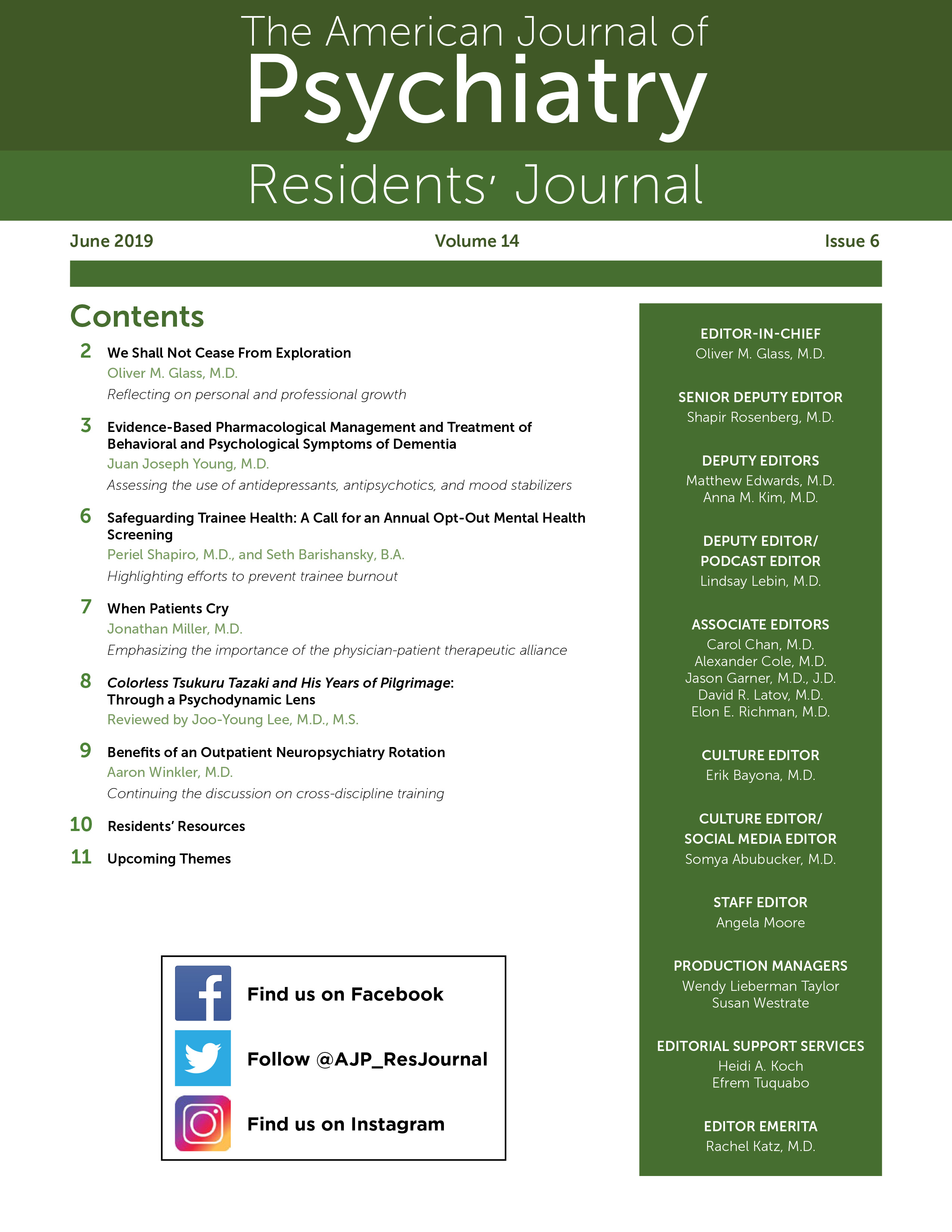Colorless Tsukuru Tazaki and His Years of Pilgrimage: Through a Psychodynamic Lens

Colorless Tsukuru Tazaki and His Years of Pilgrimage is a third-person narrative novel by the internationally best-selling author Haruki Murakami. The novel, which vividly illustrates the emotions, dreams, and fantasies of its characters in the face of traumatic events, lends itself to be viewed through a psychodynamic lens. This approach may help readers become sensitively attuned to the intrapsychic world of the protagonist, Tsukuru, and, more generally, to that of patients dealing with trauma.
Growing up with an invalidating father and with four high school friends who have colorful personalities, Tsukuru views himself as "colorless" and boring. His sense of colorlessness is heightened by the fact that each of his friends has a literal color in his or her name that defines their nicknames: Red, Blue, White, and Black. As a college sophomore, Tsukuru is abruptly abandoned by his friends with no explanation. For months following this event, Tsukuru experiences a severe depressive episode with suicidal ideation. As a defense, Tsukuru rationalizes the loss and isolates his emotions. During his adulthood Tsukuru loses other significant people, and the fear grows in him that someone he genuinely loves might suddenly disappear.
After more than a decade of life devoid of intimacy, the 36-year-old civil engineer finally finds his potential "self-object" Sara (who fulfills mirroring and idealizing needs, as described by Heinz Kohut), an assertive and empathic 38-year-old travel agent. Sara encourages Tsukuru to embark on a journey to elucidate the cause of his severed relationships, hoping this "pilgrimage" will resolve his fear of intimacy. As Tsukuru reconnects with the friends he once believed to be kaleidoscopic, he confronts the truth, which grants him a more cohesive narrative of his life and a "colorful" sense of self.
The novel depicts numerous traumatic events and shows how different characters internalize traumatic experiences in unique forms of intrapsychic conflicts, defenses, fantasies, and dreams. The book addresses the notion that the quality of posttraumatic symptoms correlates more with personal psychodynamics (e.g., character traits or defense styles) than with the severity of the traumatic event itself. The novel displays not only how a traumatic event affects an individual victim but also how it has an impact on multiple individuals, especially regarding how victims' intrapsychic worlds may resonate and clash (e.g., victims' maladaptive defense styles may spawn secondary interpersonal trauma).
Sara's interventional approach to Tsukuru's tumultuous intrapsychic world resembles how a psychotherapist might help a trauma victim. She uses a trial interpretation (Tsukuru's avoidant behaviors might have resulted from his losing four friends) to evaluate Tsukuru's psychological mindedness and prioritizes dealing with his "resistance." Their unorthodox therapeutic (and primarily romantic) relationship seems to facilitate Tsukuru's bringing to light unconscious materials. However, because of the genuine yet embarrassing quality of these unveiled feelings and thoughts, Tsukuru fears that Sara might inflict additional trauma by abandoning him.
Can Sara remain Tsukuru's lover and therapist? Is Tsukuru a victim of unconscious repetition compulsion? Will he overcome his fear of self-assertion? Readers will enjoy the degree of freedom this book allows for formulating their own answers to these questions.



